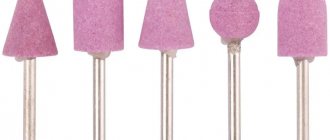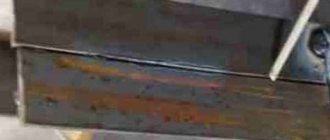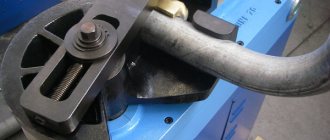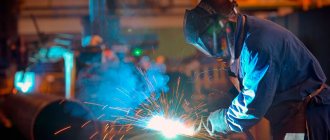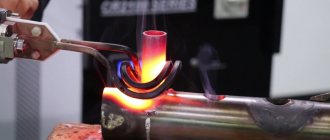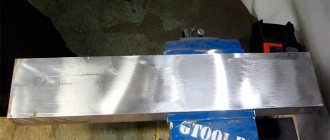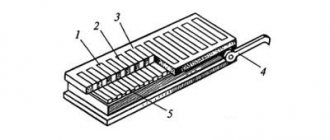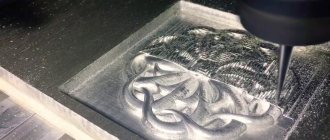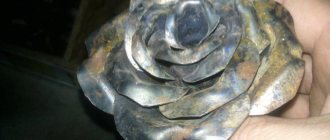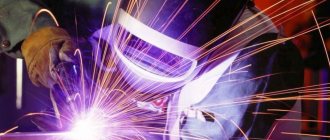Pyrography or simply burning is a cool hobby for children and adults. You don't have to be an artist to make a painting that you won't be embarrassed to hang on your wall. Even basic drawing skills may not be useful, since stencils are most often used in pyrography. All you need to create a masterpiece is a desire to learn something new, a desire for creativity and burning tools with which you will work in the future.
The very first thing a novice craftsman needs to do is purchase a good wood burner. This is a basic tool, so you need to choose it wisely. It is better to buy a soldering iron with a wire tip and a temperature regulator - it is much easier to apply shadows and do shading if it is possible to reduce the heating of the device.
Another important parameter is the length of the rod. The shorter the burner rod, the more familiar and easier it is to work with. It will feel like a heavy pen, but it won't stop you from drawing neat, clean lines.
Also choose sets with a normal number of attachments. You definitely need to have several types of nozzles of different widths. It is better not to take attachments in the shape of stars, hearts and other figures; they are extremely rarely needed when burning paintings. You can buy them if you plan to make ornaments, but if you still don’t have a specific style, it’s better to postpone such a purchase until later.
Types of burners
Before you begin, you should purchase the most suitable burner. The quality of the resulting product largely depends on the main characteristics. Beginners and professionals use 2 types of soldering irons:
- With wire stings.
- With hard tip.
Many people compare a burning device with a hard pen to a soldering iron. The working part is represented by a tip of a complex shape, which is heated by nichrome wire when voltage is applied. A distinctive feature is that the delivery set includes a set of attachments. Their geometric shape can differ significantly; it is selected depending on what kind of pattern you need to get. The main advantages of this proposal:
- Relatively low cost.
- Long service life.
- Easy to use.
The only significant drawback is that it takes about 5 minutes or more to warm up. To ensure safety at the time of burning the design, the design is equipped with a large handle, so difficulties may arise when performing delicate work.
A tool with a wire pen is often used to burn small images on wood. In this case, the heating wire comes into contact with the wood. The advantages can be considered:
- The device is ready for use almost immediately after switching on.
- Models from the middle and high price categories have a regulator that allows you to select the most suitable thermal mode.
- The design is optimally suited for a wide variety of work.
- The thin thickness of the heating wire ensures little contact with the material, so there are no problems with fine work.
The disadvantage is the high cost and low maintainability. The heating wire can become deformed even with a slight impact.
Preparation of the workplace
To get started, you only need a pyrograph and a burning kit (boards and sketches). If you take up pyrography more seriously, then your workshop will have a hacksaw or jigsaw, pliers or pliers, wire cutters, a screwdriver, sandpaper, a wire brush for cleaning the pen, a steel ruler, pencils, an eraser, adhesive tape, carbon paper, templates, etc. . But a beginner doesn’t need all this yet, but a good work surface (table), a sufficient light source (natural or table lamp), a towel (a roller to support the wrist) and a respirator will come in handy already at the start of work.
A fan will also be useful; it will protect your lungs from dust, without which the burning process, alas, cannot be done.
Remember that the light on the work surface must fall at an acute angle. With this light, you will be able to see the subtle shadows cast by the different-sized grooves. You will be able to evaluate the visual result of the shading even at the moment of its creation.
How to choose a tool?
In order to learn how to work with a tool, you should choose it correctly. Recommendations for selecting a suitable burner:
- The volume of work carried out and its complexity are determined. Small burnt designs with fine lines look attractive, but they can be almost invisible on larger pieces.
- Beginners often purchase a tool from a low price category. This decision is justified by the fact that in the absence of experience, mistakes can be made, due to which the device will cease to function.
- The most important parameters include power, tip dimensions, the possibility of using attachments and their number, heating time, etc. All required information is indicated in the operating instructions.
- The classic version of the tool is represented by a combination of a step-down transformer, a handle and a working part. There are also sophisticated burning machines on the market that can be used to produce complex images.
- It is recommended to give preference to products from popular manufacturers, as they can last for a long period.
Only over time will the master, based on personal experience, be able to select the most suitable tool. The choice of design is often made depending on the available options for burners and attachments for them.
Which attachments are best to buy?
All you need to do is purchase a set of attachments to get started. This is what an excellent set, tested experimentally, looks like:
All attachments are unlikely to be used. The main ones, most often used, are usually nozzles for burning lines (varying their thickness). Wedge-shaped, conical, thin needle-shaped - a must. The brass signets included in the set can be used to create ornaments - an interesting result is guaranteed.
Burning methods
You can begin burning work after selecting a sketch after the working part of the tool has been heated to the required temperature. If the tip heats up unevenly, this indicates the appearance of defects and the need to replace it. You can eliminate the possibility of the device overheating by periodically disconnecting it from the network. When considering the main burning methods, you should consider:
- Once drawn, the lines cannot be erased. Therefore, before starting complex drawings, you need to gain experience with easy ones.
- Beginners are advised to use stencils. They can be made in a variety of ways or purchased online.
- Three-dimensional drawings are obtained by combining lines of different shades. When you move the tool quickly, you get a thin light line, but by holding the tip you can get a dark line.
- An experienced craftsman takes into account how the fibers are arranged. The easiest way is to guide the tool along the grain.
When using various techniques, you can obtain complex drawings that are practically indistinguishable from paintings. At first, it is recommended to use the simplest methods.
Tips for Beginners
To ensure that the first point does not stand out and the lines are smooth, blow lightly on the tip.
- Follow the outline with one line. Work slowly. You can help yourself by moving the base with your other hand.
- Fill with medium heating temperature of the device. Perform slow circular movements.
- Using a metal scouring pad, clean the tip several times as you work.
- It is impossible to erase an already scorched line, so work carefully and focused.
- Thick lines can be obtained by moving the tool very slowly across the surface. And thin ones are the opposite - draw lines quickly.
- The higher the temperature of the device, the darker your lines will be.
To get smooth tonal transitions in one line, use a small table fan. It will cool the tip and the lines will be smooth. But be careful and attentive!
Where to begin?
Using a burner is simple, but to get beautiful drawings you need to have talent and skills. The main recommendations are the following:
- Before directly applying the design, you should choose the right tree. There are a large number of different breeds, all of which react differently to temperature. It is recommended to give preference to soft hardwood: aspen, poplar, linden.
- Some wood can withstand a single point temperature of +250°C, while others ignite at 120°C. The softness of the surface layer simplifies the movement of the sting.
- The surface on which the design is burned must be pre-treated. Even minor defects can cause the tip to accidentally wobble.
- Contour lines are drawn using a stencil and pencil. Artists can apply the sketch by hand. Complex designs are applied using carbon paper.
To place the tool, a stand is made of non-flammable material. A ceramic plate or glass is often used. Ceramics can withstand high temperatures for long periods.
How to work correctly?
First of all, it is necessary to ensure good and proper lighting. If the work will be done on the street, then properly installed street light poles will help with this.
The working tool resembles a simple pencil with a wide working part. Therefore, the work carried out is practically no different from drawing on paper, except that the working part is heated before use. The whole process is divided into several main stages:
- Preparation. It involves choosing the wood on which the design will be applied. The surface should be smooth and even. It is possible to make the board smooth by sanding it.
- Drawing. For those who create pencil drawings, the task will be simple. In the absence of appropriate skills, a suitable design is printed and then applied to a board using stencil paper.
- Burning out. After warming up the working part of the tool, you can begin burning. The handle of the tool, if it has a small thickness, is taken like a pencil. Simple drawings begin with drawing contours, straight lines are created with quick movements without applying strong pressure. If several lines are located in close proximity, they should be applied with some delay, which is required for cooling. The hue changes by setting the appropriate power. Also, to obtain complex patterns, the nozzles are changed.
Many people leave the product after applying the design without carrying out final processing. This may lead to a reduction in the service life of the product.
Final processing
After receiving the image, the surface is treated with sandpaper. You can protect wood from the negative effects of the environment as follows:
- The wood is varnished. This substance significantly extends the life of the product. At the same time, the drawing does not lose its contours, remains bright and rich.
- If necessary, partial or complete coloring of the space that is formed between the drawn lines is carried out.
Final processing of the product can be carried out using a variety of protective substances. The choice is made depending on what result needs to be achieved.
Getting Started
You need to work in a ventilated area using a respirator. The workplace and workpiece must be well lit. To prevent your working arm from getting tired, you can place a soft cushion under the elbow joint.
A hard pencil is suitable for drawing a sketch. In case of an error, excess lines are removed with an eraser. You can use carbon paper to make drawing easier.
During burning, the following rules must be observed:
- First, the main lines and contours of the image are burned out, after which detailing and shading are performed.
- It is better to move towards the body, so the arm will get less tired.
- If your drawing has a fill or gradient, the first step is to draw the outlines.
After completing the process, the surface of the image is cleaned with sandpaper (it is better to use fine-grained paper), and the charred areas are removed. The project can be colored with paints. After all the manipulations, the finished painting is varnished and left to dry.
Safety precautions
You should work with the burner carefully. The main recommendations are as follows:
- When using the tool, you need to use a special stand, which is made using heat-resistant material. In its absence, ceramic dishes or other products made from this material are used.
- The tool should not be left on the surface being treated for a long time. This is due to the fact that prolonged exposure to high temperatures leads to fire of the material.
- No flammable materials should be located near the work table. Even short exposure may result in a fire.
- Drawing should be done carefully. Clumsy and quick actions can lead to burns.
- Even a high-quality tool can overheat. Therefore, it is recommended to monitor the heating level of the working part.
At the time of burning, unpleasant smoke may appear, which is not recommended to inhale. Work must be carried out in a prepared workplace. Distractions lead to mistakes being made, and the work will have to start all over again.
